iPhone 15 Pro vs Samsung Galaxy S24 -- specs, price, & features compared
The launch of the Samsung Galaxy S24 puts the South Korean tech giant against Apple once more. Here's how its specifications fare against the iPhone 15 Pro.
![iPhone 15 Pro [left], Samsung Galaxy S24 [right]](https://photos5.appleinsider.com/gallery/58225-118717-iphone-15-pro-samsung-galaxy-s24-xl.jpg)
iPhone 15 Pro [left], Samsung Galaxy S24 [right]
Samsung's annual early-year Unpacked event has once again brought out new flagship phones for the South Korean electronics company. Three models were introduced during the event, with the Galaxy S24 accompanied by the larger Galaxy S24+ and the high-specification Galaxy S24 Ultra.
The Galaxy smartphones have historically been compared with its main rival, Apple and its iPhones, with the iPhone 15 Pro seemingly the best match for a direct comparison. This is down to the similar size of display, as well as Samsung's habit of including lots of cameras on its devices whereas the non-Pro iPhone models are more minimalist.
iPhone 15 Pro vs Samsung Galaxy S24 - Specifications
| Specifications | iPhone 15 Pro | Samsung Galaxy S24 |
|---|---|---|
| Price (starting) | $999 | $799.99 |
| Dimensions (inches) | 5.77 x 2.78 x 0.32 | 5.78 x 2.77 x 0.30 |
| Weight (ounces) | 6.60 | 5.93 |
| Processor | A17 Pro | Snapdragon 8 Gen 3 Mobile Platform for Galaxy |
| Storage | 128GB, 256GB, 512GB, 1TB | 128GB, 256GB |
| Memory | 8GB | 8GB |
| Display type | 6.1-inch Super Retina XDR, ProMotion, always-on display | 6.2-inch Dynamic AMOLED 2X Display |
| Resolution | 2,556 x 1,179 at 460ppi | 2,340 x 1,080 at 416 ppi |
| Biometrics | Face ID | Under-display ultrasonic fingerprint reader |
| Connectivity | 5G (Sub-6GHz and mmWave) Gigabit-class LTE Wi-Fi 6E Bluetooth 5.3 Ultra Wideband Gen 2 Emergency SOS via Satellite Roadside Assistance via Satellite USB-C | 5G (Sub-6GHz and mmWave) LTE Wi-Fi 6E Bluetooth 5.3 NFC USB-C |
| Rear Cameras | 48MP Wide 12MP Ultra Wide 12MP Telephoto with 3x optical zoom | 50MP Wide 12MP Ultra Wide 10MP Telephoto with 3x optical zoom |
| Front Camera | 12MP TrueDepth with Autofocus | 12MP |
| Battery Size | 3,274mAh, Up to 23 hours video playback time | 4,000mAh |
| Colors | Black Titanium, White Titanium, Blue Titanium, Natural Titanium | Onyx Black, Cobalt Violet, Marble Gray, Amber Yellow, Jade Green (Samsung direct), Sandstone Orange (Samsung direct), Sapphire Blue (Samsung direct) |
iPhone 15 Pro vs Samsung Galaxy S24 - Physical dimensions
The iPhone 15 Pro, with a few months of sales under its belt, offers consumers a fairly familiar frame, measuring 5.77 inches tall and 2.78 inches wide. By comparison, the Galaxy S24 is ever so marginally longer at 5.78 inches but narrower at 2.77 inches.
This is somewhat interesting, as Samsung practically has the same footprint as Apple's device, despite having a physically larger display at 6.2 inches to 6.1 inches. Samsung manages this by the use of thinner bezels.
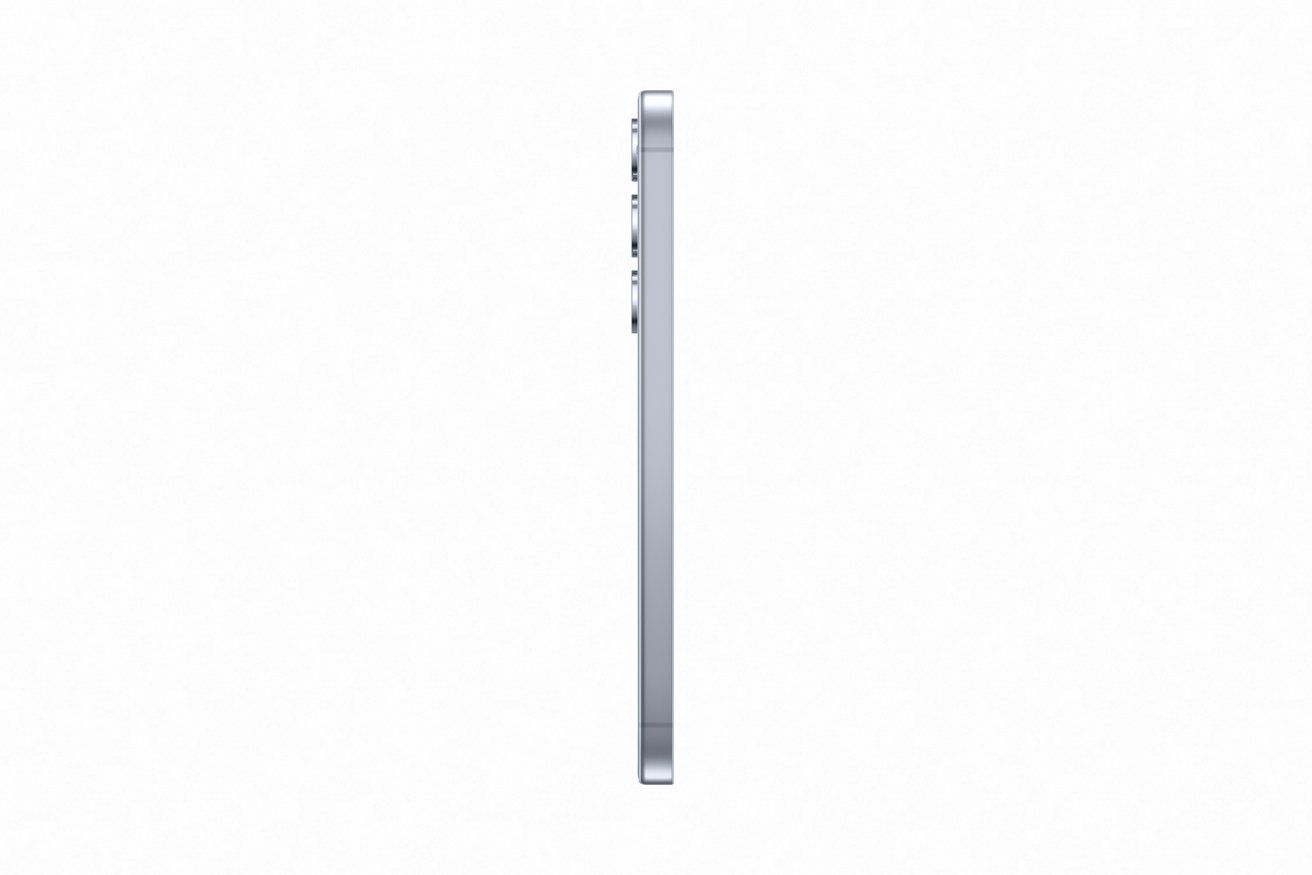
The Samsung Galaxy S24 is marginally thinner than an iPhone 15 Pro
In terms of thickness, the battle is just in Samsung's court at 0.3 inches to Apple's 0.32 inches. Sure, this does make Samsung's Galaxy S24 a thinner device, but we're talking very slim variances here, and it certainly doesn't make Apple's iPhone a heavyweight by comparison.
At least, Apple's device is heavier for other reasons. At 6.6 ounces, the iPhone 15 Pro is a bit weightier than the Galaxy S24, but it's more from changes like its use of a titanium frame internally, rather than aluminum, which Samsung employs here.
iPhone 15 Pro vs Samsung Galaxy S24 - Display
The screen of the iPhone 15 Pro consists of a 6.1-inch Super Retina XDR OLED panel, with a resolution of 2,556 by 1,179, giving it a pixel density of 460ppi. It's also an always-on display, thanks to its ProMotion support and variable refresh rate up to 120Hz.
It also has the Dynamic Island at the top, up to 1,000 nits of typical brightness, 1,600 nits for peak HDR content, and up to 2,000 nits when you're outdoors. There's Wide Color (P3) support, True Tone, and an oleophobic coating to kill off fingerprints.
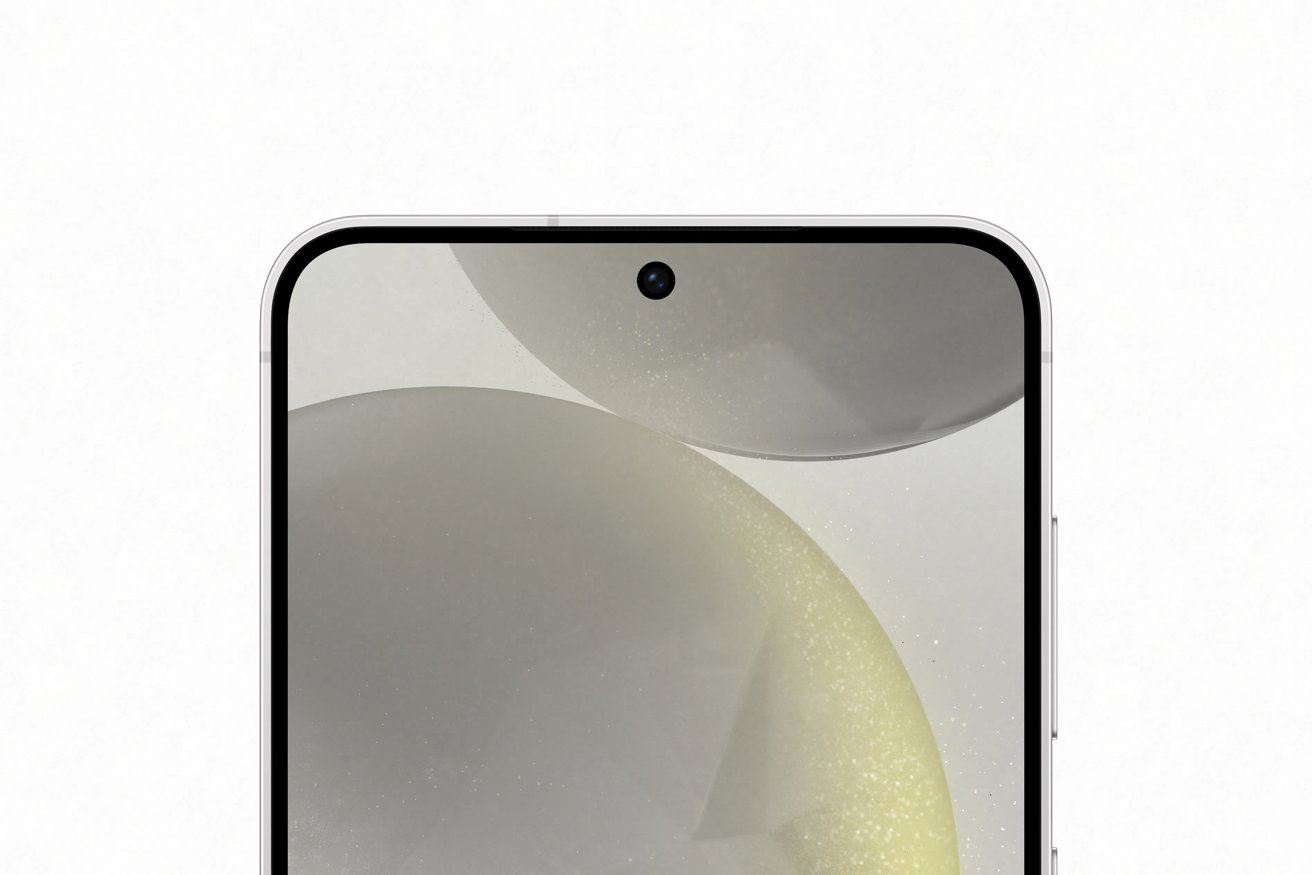
Samsung's Galaxy S24 display has a hole punch camera at the top
Samsung uses a 6.2-inch Dynamic AMOLED 2X display, basically an OLED panel that's a tiny bit larger than Apple's version. However, at 2,340 by 1,080, it's a lower resolution than the iPhone, and with a lower pixel density of 416ppi.
Like Apple, Samsung offers an always-on display, with a SuperSmooth-branded 120Hz refresh rate that can go down to 1Hz. Brightness can go up to 2,600 nits, with HDR 10+ support also included.
While Apple has hidden its hole-punch camera system with the Dynamic Island, Samsung goes down the route of having a similar camera gap, but without really trying to hide it with UI elements.
iPhone 15 Pro vs Samsung Galaxy S24 - Cameras
The iPhone 15 Pro includes a triple camera setup, starting with a 48-megapixel f/1.78 aperture Main camera with a second-generation sensor-shift optical image stabilization. With the latest release, Apple has increased the default image size from 12MP to 24MP.
The Main camera is joined by the 12MP Ultra Wide with an f/2.2 aperture and a 120-degree field of view. The third is the Telephoto, a 12MP sensor with an f/2.8 aperture and a 3x optical zoom.
Apple also includes its usual advances in computational photography, using Deep Fusion and the Photonic Engine, with support for Smart HDR 5, Portrait Lighting, Focus and Depth Control portraits, LiDAR-supported Night Mode, and Apple ProRAW.
Arguably the biggest change for Apple this year is in video, as there is 4K 60fps video recording, including the possibility to record ProRes 4K 60fps directly to an external drive. The addition of log video recording and support for the Academy Color Encoding System helps, too.
Samsung includes three cameras in the Galaxy S24, with the main Wide camera being a 50-megapixel f/1.8 shooter with Dual-Pixel PDAF and optical image stabilization. There's also the 12MP Ultrawide with an f/2.2 aperture and a 120-degree field of view, and a lower 10MP f/2.4 Telephoto with 3x optical zoom.
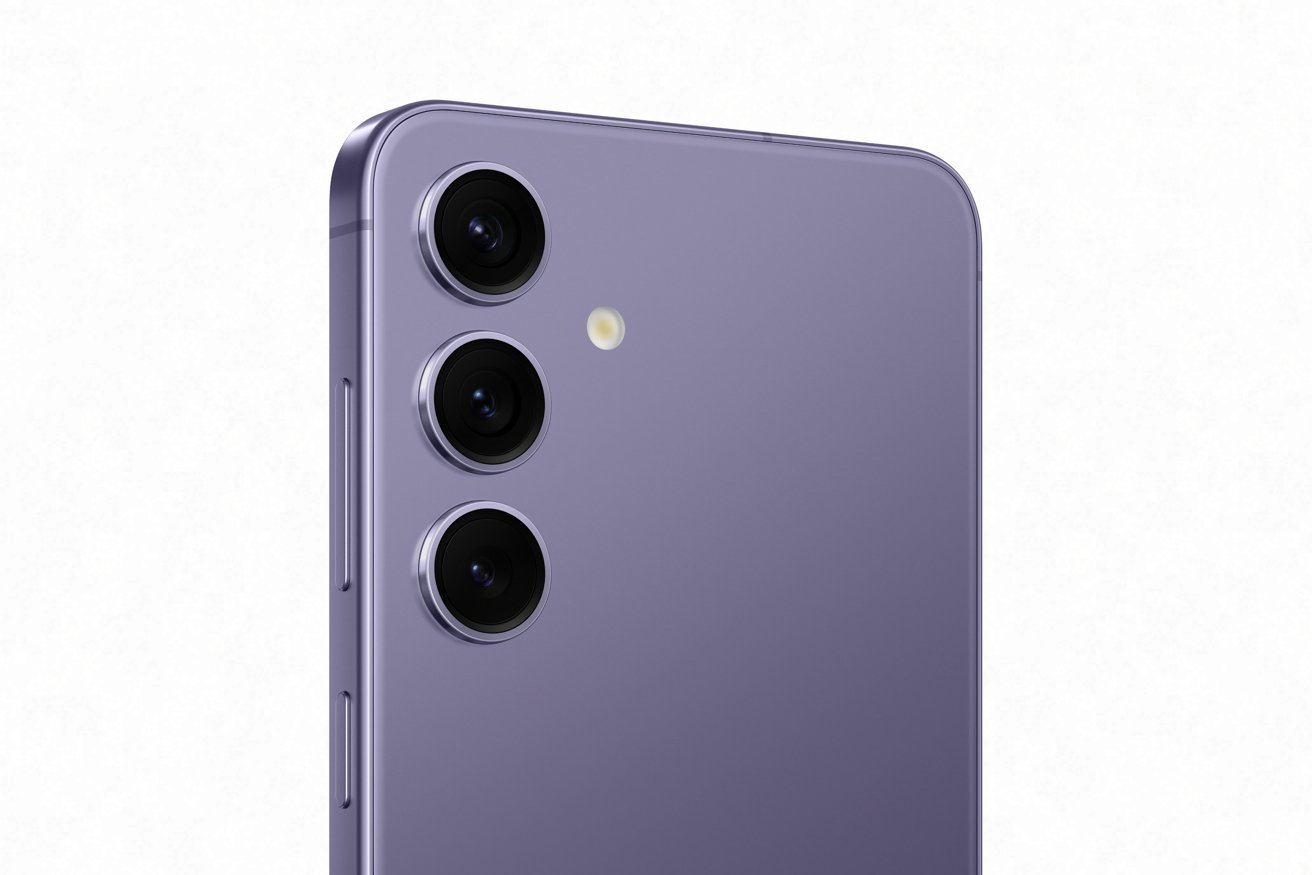
The rear cameras of the Samsung Galaxy S24
In terms of video, Samsung does go higher than Apple, with 30fps 8K recordable. For slo-mo, while the iPhone manages 1080p 240fps, Samsung can get up to 960fps.
Around the front, Apple uses a TrueDepth camera that's 12MP in resolution, with it having autofocus with Focus Pixels. It also handles biometric security thanks to the TrueDepth array.
Samsung also uses a 12-megapixel camera with Dual-Pixel PDAF, though it doesn't offer 3D face mapping.
Like Apple, Samsung also offers its own AI-powered photography benefits, including "Nightography" capabilities and "Space Zoom," along with Galaxy AI editing tools. Simple edits such as erase, re-compose, and remaster are available, complete with AI suggestions for edits, and Generative Edit to fill in missing parts of a frame.
Where Apple aims to use machine learning to improve the image before the user gets to it, Samsung is offering users the ability to be creative with the technology. It's using similar technology to a point, but with different applications.
iPhone 15 Pro vs Samsung Galaxy S24 - Processor
The A17 Pro in the iPhone 15 Pro, Apple's latest A-series chip, with it having a 6-core CPU using two performance and four efficiency cores, while built using 3-nanometer technologies. The CPU alone is approximately 10% faster than its predecessor thanks to a combination of microarchitecture and design changes.
On the GPU side, it has a new 6-core version, billed by Apple as the "biggest GPU redesign" in its history. Up to 20% faster than the last generation, it has hardware-accelerated ray tracing that's four times faster than the software-based equivalent, which should help future game releases look impressive.
Apple also includes the Neural Engine, which is now twice as fast as previously, and a dedicated AV1 decoder for video.
Samsung's choice is the Snapdragon 8 Gen 3 Mobile Platform for Galaxy, a version of Qualcomm's chipset that's been optimized for Samsung. While Samsung hasn't outlined what specifically has changed on the chipset, Qualcomm does detail what it can do in its default form.
The Kyro CPU included in the chipset consists of one Prime core clocked at up to 3.3GHz, five performance cores capable of up to 3.2GHz, and two efficiency cores running at up to 2.3GHz.
The Adreno GPU too offers hardware-accelerated ray tracing with global illumination, as well as having Game Super Resolution and Post Processing accelerators. It too includes hardware-accelerated H.265, VP9, and AV1 decoding onboard.
Then there's the Hexagon NPU, effectively its version of the Neural Engine. It includes a fused AI accelerator architecture with scalar, vector, and tensor accelerators. Meanwhile, the Sensing Hub includes dual micro NPUs for audio and sensors.
Both smartphones are equipped with 8GB of memory.
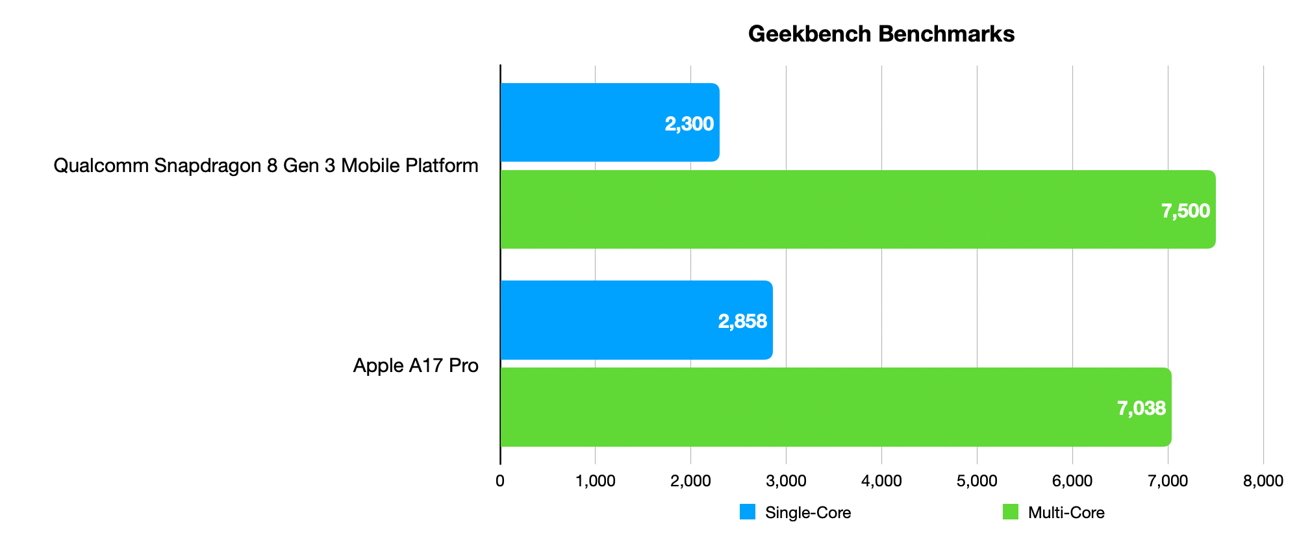
Geekbench benchmarks for Qualcomm's chipset (early results) versus the A17 Pro
Early benchmarks do indicate that there is a difference in performance between the iPhone 15 Pro's A17 and the Snapdragon 8 Gen 3, though they are more a guideline until Samsung actually releases its smartphone.
So far, early benchmark results put the Qualcomm reference device running Snapdragon 8 Gen 3 at around 7,500 for the multi-core score and 2,300 for the single-core test.
By comparison, the iPhone 15 Pro got to 2,858 for the single-core and 7,038 for the multi-core tests.
There therefore is a trading of blows in performance, with the iPhone better for single-core tasks, namely everyday use, while the Snapdragon should be better when you need all the power the device can muster.
Regardless, they're both very powerful chips at the top-end of the performance scale.
Samsung did boast about the Galaxy AI capabilities of its device at launch, which is to be expected with the ongoing AI gold rush dominating tech news headlines.
Aside from the photographic smarts, Samsung discusses Live Translate two-way real-time voice and text translations, which is similar to Apple's own Translate tool.
Text entry is a big thing in the lists, with Chat Assist helping users "perfect conversational tones, Note Assist creating AI-generated summaries and templates, and Transcript Assist able to transcribe and summarize recordings.
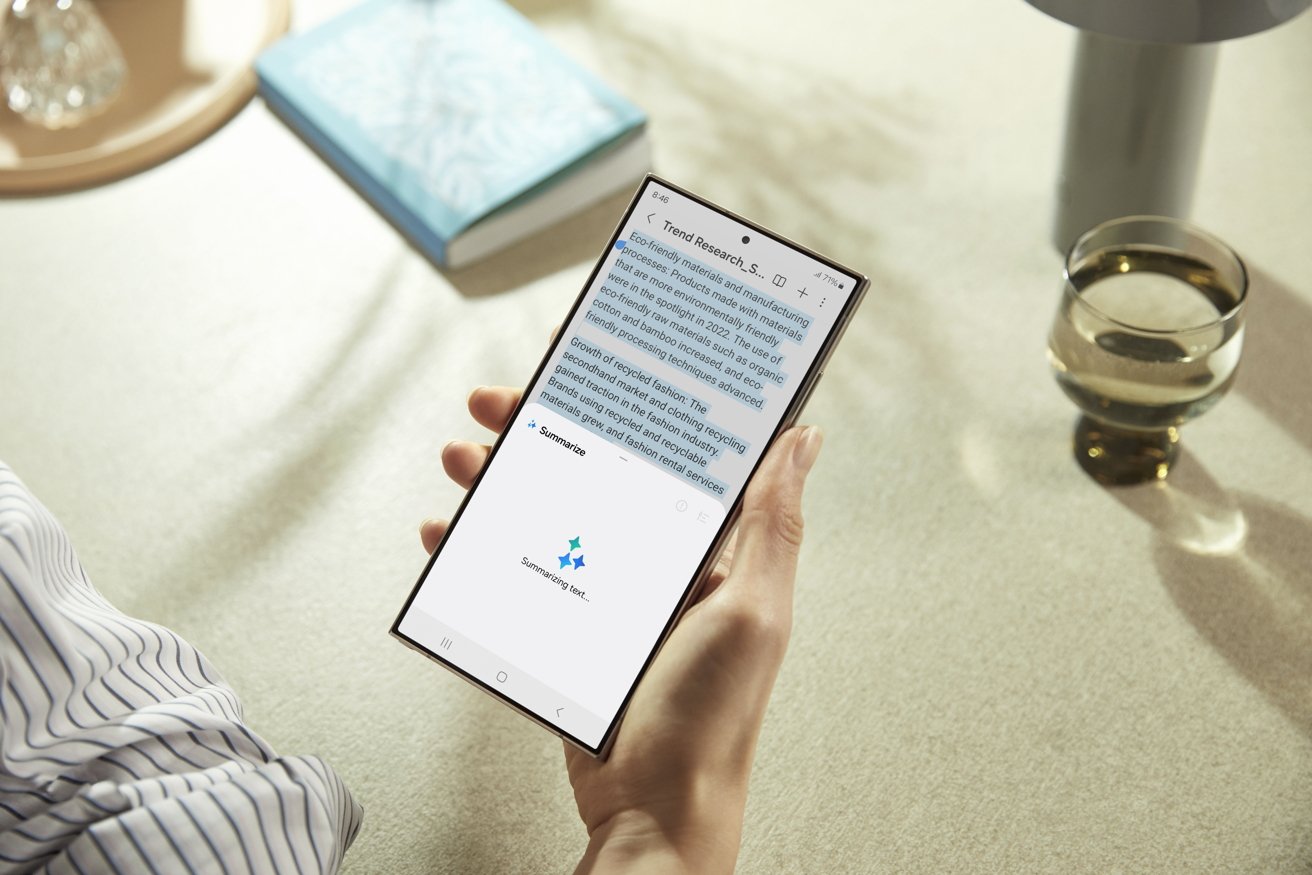
Samsung's AI usage includes a summarization feature.
Circle to Search with Google is also promoted by Samsung, with users able to circle or highlight whatever's on-screen to generate search results.
While Apple already includes a lot of AI smarts in iOS, it's still working on creating more AI-based features that it could introduce as soon as WWDC 2024.
iPhone 15 Pro vs Samsung Galaxy S24 - Connectivity, power, and other features.
With Apple's changes away from Lightning in favor of USB-C, the iPhone 15 Pro now has the same physical connectivity as Samsung's long-term use of the port.
Both smartphones are capable of using both sub-6Ghz and mmWave varieties of 5G connection. For local networking, each has Wi-Fi 6E, and Bluetooth 5.3 support, with Apple also including Ultra Wideband too. There's also NFC too.
Apple also includes satellite communication, through its Emergency SOS via Satellite and Roadside Assistance via Satellite features.
For power, both have Qi wireless charging support, though Apple also has its MagSafe connection. Samsung does include Wireless PowerShare, which reuses the wireless charging system to recharge other devices.
Fast charging is provided using USB-C, with a 50% charge possible within 30 minutes when using a suitable power source.
On battery life, Apple's 3,274mAh battery is claimed to last for up to 23 hours when used for video playback.
The Galaxy S24 has a 4,000mAh battery, but Apple doesn't say how long the battery lasts beyond it lasting all day.
For biometric security, Apple relies on Face ID, which uses 3D depth mapping to scan a user's face each time. Samsung uses an under-display ultrasonic fingerprint reader.
iPhone 15 Pro vs Samsung Galaxy S24 - Storage, color, and price
Apple offers the iPhone 15 Pro in four capacities: 128GB, 256GB, 512GB, and 1TB. They are priced at $999, $1,099, $1,299, and $1,499 respectively.
Samsung sells the Galaxy S24 from $799 for the 128GB capacity model, or $859.99 for the 256GB version.
In terms of color, Apple gives you four options: Black Titanium, White Titanium, Blue Titanium, and Natural Titanium.
Samsung has a total of seven colorways to choose from, with Onyx Black, Cobalt Violet, Marble Gray, and Amber Yellow available from most outlets. Three others, consisting of Jade Green, Sandstone Orange, and Sapphire Blue, are only available from Samsung directly.
iPhone 15 Pro vs Samsung Galaxy S24 - Which to buy
Comparing Apple and Samsung's flagship models is often an opportunity to see how the South Korean chaebol tries to take on the best from Cupertino each year. This usually results in a fairly close race, and one that neither company can be disappointed over.
For the early 2024 edition, it's basically the same sort of thing once again.
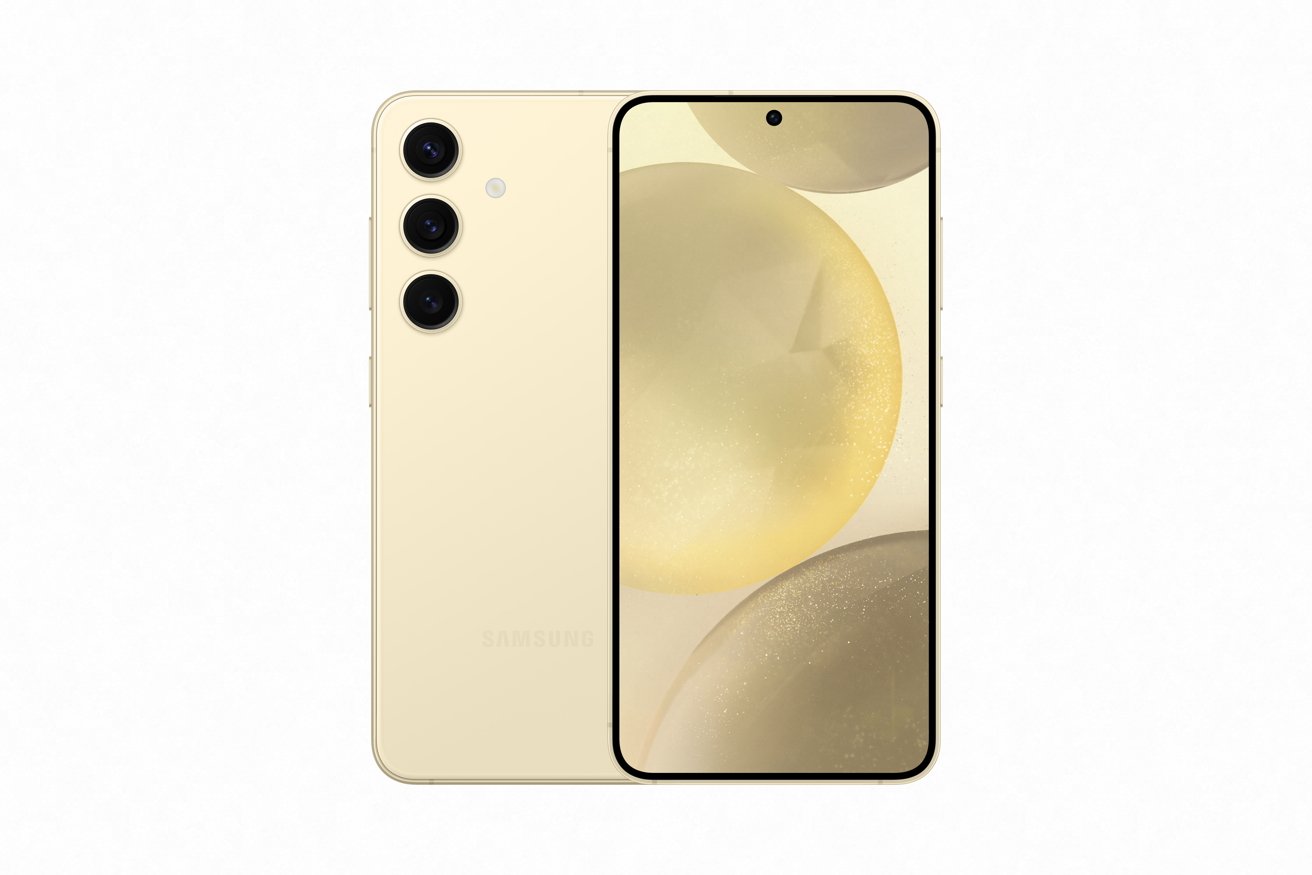
The Samsung Galaxy S24 is a good rival to the iPhone 15 Pro
Samsung's Galaxy S24 is pretty close to the iPhone 15 Pro in physical size, but it's lighter. It has that marginally bigger display that has many of the same bells and whistles as Apple's version, except it's disappointingly a bit lower in resolution.
For performance, the state of Qualcomm's Snapdragon 8 Gen 3 Mobile Platform is one that can seriously give Apple's A17 Pro a run for its money.
It's also kept up with Apple's computational photography efforts, but with a greater emphasis on post-shot editing and the greater use of generative AI. This is a departure that Apple could potentially match down the road, but that will take time.
With dings against its name for storage capacity options, resolution, and even the continued use of fingerprint recognition with facial recognition options, the Galaxy S24 does fight back in pricing. $200 is a lot when comparing smartphones, and it's fairly easy to justify a dip in pixel density and in areas where Apple excels over Samsung.
What Samsung has made in the Galaxy S24 is an Android smartphone that ticks most of the boxes a person may want of a mobile device, and does so at a slightly reduced cost compared to Apple's iPhone 15 Pro.
For typical smartphone buyers, Samsung's release is certainly serviceable. It's a very powerful smartphone that has a decent screen, and offers enough to satisfy many who go for it as their next upgrade with relatively few real complaints.
While Samsung may not necessarily tempt many of the Pro-model iPhone faithful with the release, but it will at least make some pause for thought.
iPhone 15 Pro vs Samsung Galaxy S24 - Where to buy
Apple's iPhone 15 Pro is available at wireless carriers AT&T and Verizon, with aggressive iPhone deals in place often discounting the device to free via bill credits and trade-in incentives.
Samsung's S24 is also discounted when ordered directly from Samsung, with limited-time offers in place ranging from instant credit to free storage upgrades.
Read on AppleInsider

Comments
You probably mean Samsung, rather than Apple there....
I seriously doubt there are massive amounts of people walking out of an Apple Store without an iPhone because it didn't meet their specs of what a phone should be. If someone goes into a store to get an iPhone they're gonna get an iPhone. If someone goes into a store to get an Android phone they're going to get an Android phone and neither one is because of its specs.